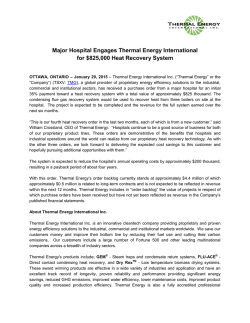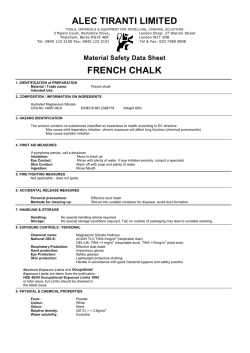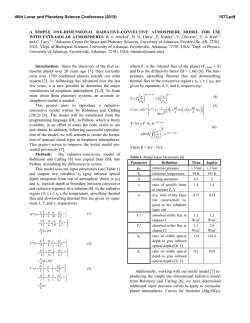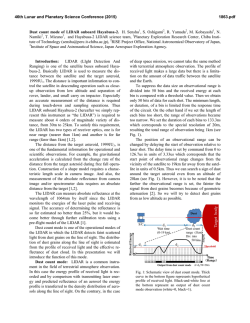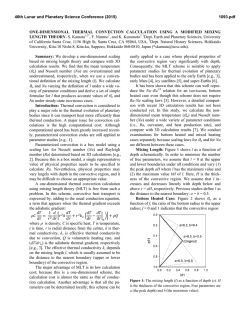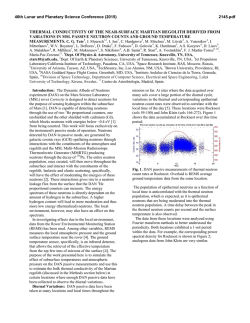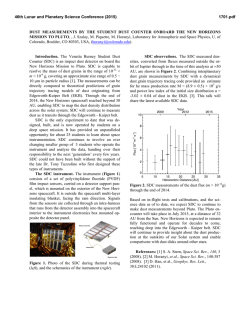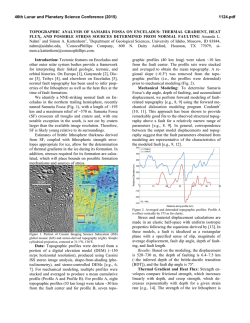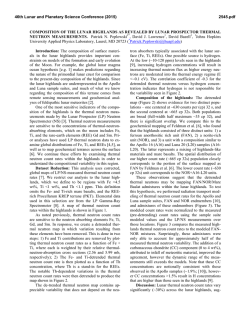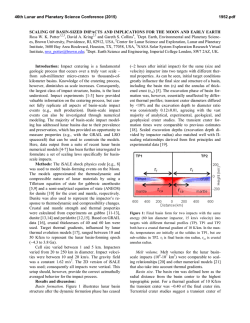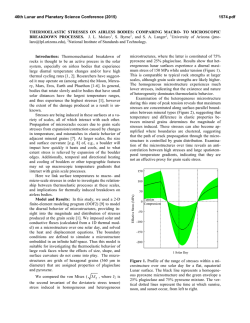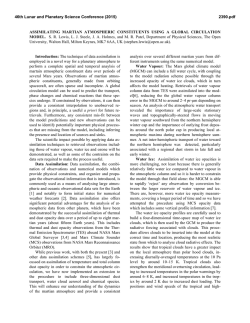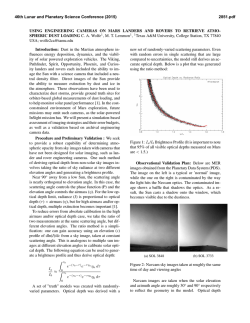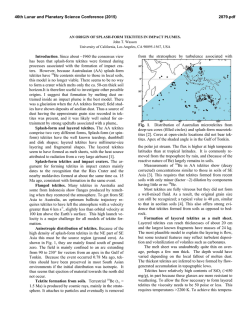
MODELING THE NEAR-SUN OBJECT, 3200 PHAETHON. Daniel C
46th Lunar and Planetary Science Conference (2015) 1781.pdf MODELING THE NEAR-SUN OBJECT, 3200 PHAETHON. Daniel C. Boice1,2 and J. Benkhoff3, 1Scientific Studies and Consulting, 9410 Harmon Dr., San Antonio, TX 78209 USA ([email protected]), 2Trinity University, Dept. of Physics, 1 Trinity Place, San Antonio, TX 78212 USA ([email protected]), 3ESA-ESTEC/RSSD, Noordwijk, The Netherlands ([email protected]). Introduction: Physico-chemical modeling is central to understand the important physical processes in small solar system bodies. We have developed a computer simulation, SUSEI, that includes the physicochemical processes relevant to comets within a global modeling framework. Our goals are to gain valuable insights into the intrinsic properties of cometary nuclei so we can better understand observations and in situ measurements. SUISEI includes a 3-D model of gas and heat transport in porous sub-surface layers in the interior of the nucleus. We have successfully used this model in previous studies of comets at normal heliocentric distances [1,2]. SUISEI has been adapted to model near-Sun objects to reveal significant differences in the chemistry and dynamics of their comae (atmosphere) with comets that don’t closely approach the Sun. At small heliocentric distances, temperatures are high enough to vaporize surface materials and dust, forming a source of gas. Another important question concerns the energy balance at the body’s surface, namely what fraction of incident energy will be conducted into the interior versus that used for sublimation. This is important to understand if the interior remains cold and is relatively unaltered during each perihelion passage or is significantly devolatilized. This also bears upon the regimes where sublimation and ablation due to ram pressure dominate in the erosion or eventual destruction of sungrazers. The resulting model is an important tool for studying sun-grazing comets and other near-Sun objects. 3200 Phaethon: We present results on the application of SUISEI to the near-Sun object, Phaethon. Discovered in 1983 and classified as an asteroid [3,4], it has recently exhibited an active dust coma [5,6,7]. Phaethon has long been associated as the source of the Geminids meteor shower [8] so the dust activity provides a clear link to the meteor shower. The observed dust activity would traditionally lead to Phaethon being also classified as a comet (e.g., 2060-95P/Chiron, 133P/Elst-Pizarro). This is unusual since the orbit of Phaethon has a perihelion of 0.14 AU, resulting in surface temperatures of more than 1025K, much too hot for water ice or other volatiles to exist near the surface and drive the activity, like a traditional comet. This has lead [7] to suggest thermal or desiccation cracking as the driving mechanisms and calling Phaethon an active asteroid. This situation (and others such as the “Main Belt Comets”) necessitates a revision of how we understand and classify these small asteroid-comet transition objects [9]. Results: The time-dependent thermal results obtained in our calculations show the temperature evolution along Phaethon’s orbit at the sub-solar point as it undergoes diurnal rotation (period of 3.604 hrs). It is noted that the subsolar temperature is consistent with the standard thermal model (STM [10]) and that diurnal variations are extreme at perihelion, resulting in temperature changes in excess of 700K in 1.8 hours, and are consistent with the near-Earth asteroid thermal model (NEATM [11]) that assumes very low thermal inertia and/or nonrotation. The average surface temperature, integrated over the entire surface are consistent with the so-called fast-rotating model (FRM [12]) that assumes a very high thermal inertia and/or very fast rotation. Ohtsuka et al. (2009) obtained similar results [13]. The gas flux of H2O along the orbit for two different thermal conductivities (high typical of NEAs and low typical of comets as well as a model with high thermal inertia for H2O gas flux in units of kg m-2 s-1. We note a sharply peaked rise in gas flux around perihelion. In all cases the water gas flux is under 10-8 kg m-2 s-1. Conclusions and Discussion. Our results show that at these low gas fluxes, it will take about 2 Myr to devolatilize a surface layer of 10 meters depth on Phaethon assuming an average gas flux of 5x10-14 kg m-2 s-1. We conclude that the interior of Phaethon may still have a relatively pristine volatile inventory despite repeated close approaches to the Sun. This is due to the low thermal conductivity of Phaethon, making the surface layers an effective thermal insulator. With maximum gas flux at perihelion being a few 10-9 kg m-2 s-1, that total water production is on the order of 1 kg s-1. This is not sufficient to entrain the observed dust production [5] so we rule out the possibility of steady water sublimation as the driver of the dust activity. However, it is possible that an impulsive gas outburst, triggered by pockets of subsurface gas suddenly bursting through the surface, may be responsible, similar to outbursts the of comets Holmes and 1P/Halley seen at large heliocentric distances. The model results also confirm the likelihood of large thermal stresses in the surface layers of Phaethon, leading to fractures and release of dust particles as 46th Lunar and Planetary Science Conference (2015) suggested previously [7]. Thermal cycling from about 1000K to about 300K at perihelion due to diurnal effects probably leads to disintegration of surface rocks which form the observed dust coma and material for the meteor stream. We also see extreme temperature gradients into the surface, especially at perihelion, which will fuel the dust release also. Thus, we conclude the following for Phaethon: 1. It is likely to contain relatively pristine volatiles in its interior despite repeated near perihelion passages of 0.14 AU during its history in its present orbit, 2. Steady water gas fluxes at perihelion and throughout its orbit are insufficient to entrain the currently observed dust production, 3. Thermal gradients into the surface as well as those caused by diurnal rotation are consistent with the mechanism of dust release due to thermal fracture, 4. The initial large gas release during the first perihelion passage may be sufficient to produce enough dust to explain the entire meteor stream. References: [1] Boice D. C. et al. (1995) Earth, Moon and Planets, 71, 235-236. [2] Benkhoff J. and Boice D. C. (1996) Planet. Space Sci., 44, 665. [3] Green S. and Davies J. (1983) IUAC 3878. [4] Kowal C. (1983) IAUC 3878. [5] Jewitt D. et al. (2013) Astrophys. J. Lett., 771, L36. [6] Li J. and Jewitt D. (2013) Astron. J., 145, 154. [7] Jewitt D. and Li J. (2010) Astron. J., 140, 1519. [8] Whipple F. (1983) IAUC 3881. [9] Boice D. (2012) IAU GA, C15 Business Meeting Minutes. [10] Lebosky L. et al. (1986) Icarus, 68, 239. [11] Harris A. (1998) Icarus, 131, 291. [12] Lebosky L. and Spencer J. (1989) Asteroids II, 128. [13] Ohtsuka K. et al. (2009) Publ. Astron. Soc. Japan, 61, 1375. Acknowledgements: We greatly appreciate support from the NSF Planetary Astronomy Program and the ESA/ESTEC Visiting Scientist Program. 1781.pdf
© Copyright 2025
